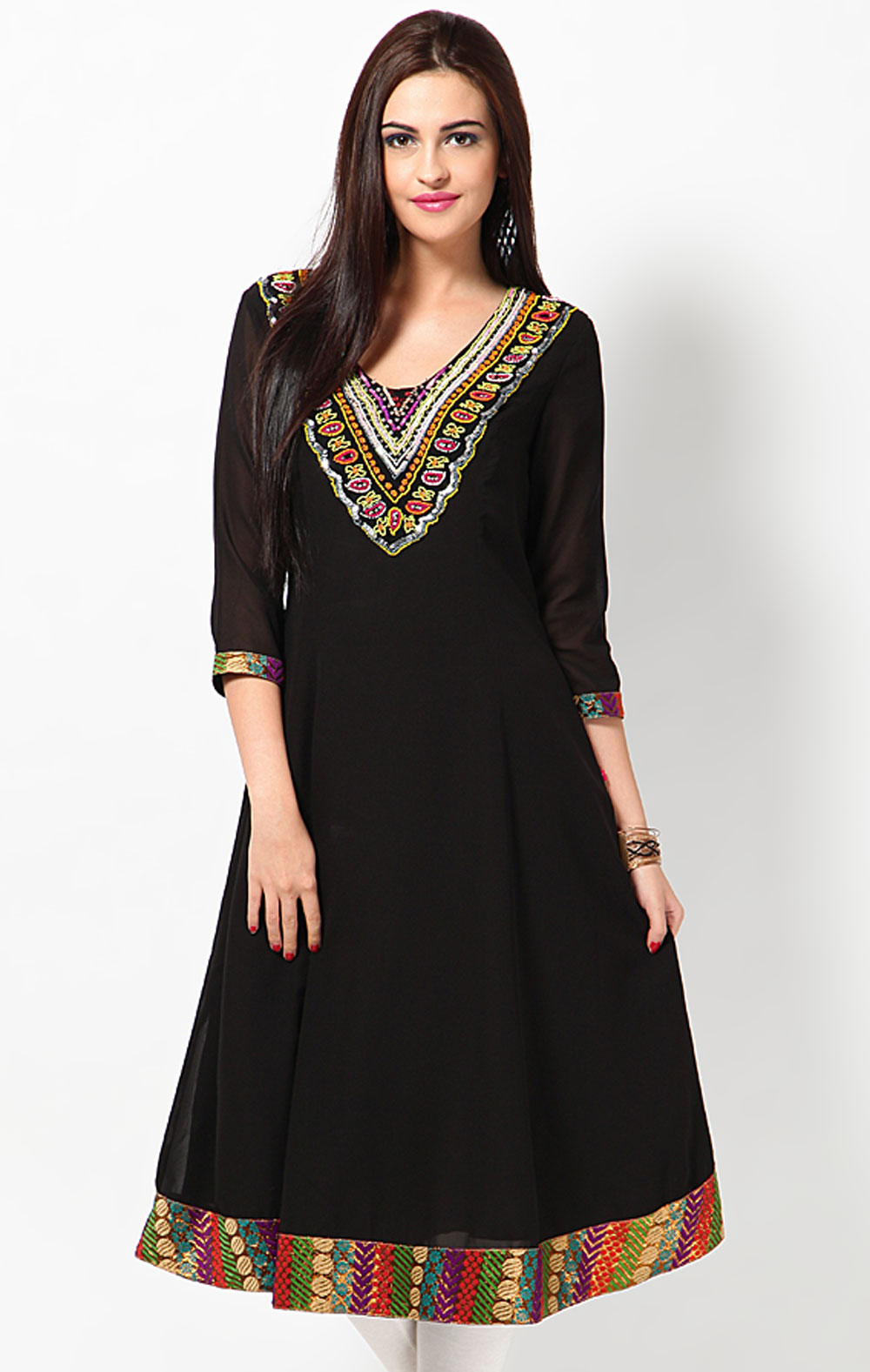Source link(Google.com.pk)
he word "kurta" is a borrowing from Hindustani,[1] and originally from Persian (literally, "a collarless shirt")[2] and was first used in English in the 20th century.[3]
Kurta is a piece of clothing worn by males, it is usually worn for fashion, tradition and culture. As the Thawb is encouraged to be worn in Saudi Arabia, Pakistani and Indian expatriates rather prefer to wear the Kurta as a close and same version to the Arab clothing.
A kurta worn by females is called a kurti. The kurta is variously known as an angarkha in Gujarat and Rajasthan and a Panjabi in Bengal, Bangladesh and Assam[4]It is a traditional dress for men in Central, West and South Asia. It is a long shirt worn in whole of Afghanistan, Pakistan, Iran and Northern Indian states namely, Jammu and Kashmir, Punjab, Haryana, Uttar Pradesh, Bihar, Himachal Pradesh, Uttarakhand and Rajasthan. A similar dress is worn traditionally in Gujarat is somewhat shorter in length than a usual Kurta and has a wider end similar to lower part of a Ghagra. In India, Hindus wear it along with Dhoti or Paijama whereas Muslims wear it along with Shalwar or Paijama.
Among young boys it is common to wear Kurta with Jeans.A traditional kurta consists of rectangular fabric pieces with perhaps a few gusset inserts, and is cut so as to leave no wasted fabric. The cut is usually simple, although decorative treatments can be elaborate.
The sleeves of a traditional kurta fall straight to the wrist; they do not narrow, as do many Western-cut sleeves. Sleeves are not cuffed, just hemmed and decorated.
The front and back pieces of a simple kurta are also rectangular. The side seams are left open for 6-12 inches above the hem, which gives the wearer some ease of movement.
The kurta usually opens in the front; some styles, however, button at the shoulder seam. The front opening is often a hemmed slit in the fabric, tied or buttoned at the top; some kurtas, however, have plackets rather than slits. The opening may be centered on the chest, or positioned off center.
A traditional kurta does not have a collar. Modern variants may feature stand-up collars of the type known to tailors and seamstresses as "mandarin" collars. These are the same sort of collars seen on achkans, sherwanis, and Nehru jackets.
Indian subcontinent has a very popular styling of Mukatsari kurta (getting its origin from the province of Mukatsar in Punjab (India)) which is famous for its slim fitting cuts and smart fit designs. It is very popular among young politicians.kurta (Urdu: كُرتا), Persian:كُرتہ, pronounced [ˈkʊrt̪aː]; (also kurti for a shorter version for women) is a traditional item of clothing worn in Pakistan, India, Nepal, Bangladesh, and Sri Lanka. It is a loose shirt falling either just above or somewhere below the knees of the wearer, and is worn by men. They were traditionally worn with loose-fitting paijama (kurta-paijama), loose-fitting shalwars, semi-tight (loose from the waist to the knees, and tight from the calves to the ankles churidars, or wrapped-around dhotis;[3] but are now also worn with jeans.[5] Kurtas are worn both as casual everyday wear and as formal dress.
Women wear kurtis as blouses, usually over jeans.[5] These kurtis are typically much shorter than the traditional garments and made with a lighter materials, like those used in sewing kameez.
Imported kurtas were fashionable in the United States in the 1960s and 1970s, as an element of hippie fashion, fell from favor briefly, and are now again fashionable. South Asian women may also wear this Western adaptation of South Asian fashion.
Formal kurtas are usually custom-made by South Asian tailors, who work with the fabric their customers bring them. South Asians overseas and Westerners, can buy them at South Asian clothing stores or order them from web retailers.South Asian tailors command a vast repertoire of methods, traditional and modern, for decorating fabric. It is likely that all of them have been used, at one time or another, to decorate kurtas. However, the most common decoration is embroidery. Many light summer kurtas feature Chikan embroidery, a speciality of Lucknow, around the hems and front opening. This embroidery is typically executed on light, semi-transparent fabric in a matching thread. The effect is ornate but subtle.
Kurta pajama Kurta Ladies Design 2014 Tops Design Uk Wear Styole Dhoti Nishat Photos Images
Kurta pajama Kurta Ladies Design 2014 Tops Design Uk Wear Styole Dhoti Nishat Photos Images
Kurta pajama Kurta Ladies Design 2014 Tops Design Uk Wear Styole Dhoti Nishat Photos Images
Kurta pajama Kurta Ladies Design 2014 Tops Design Uk Wear Styole Dhoti Nishat Photos Images
Kurta pajama Kurta Ladies Design 2014 Tops Design Uk Wear Styole Dhoti Nishat Photos Images
Kurta pajama Kurta Ladies Design 2014 Tops Design Uk Wear Styole Dhoti Nishat Photos Images
Kurta pajama Kurta Ladies Design 2014 Tops Design Uk Wear Styole Dhoti Nishat Photos Images
Kurta pajama Kurta Ladies Design 2014 Tops Design Uk Wear Styole Dhoti Nishat Photos Images
Kurta pajama Kurta Ladies Design 2014 Tops Design Uk Wear Styole Dhoti Nishat Photos Images
Kurta pajama Kurta Ladies Design 2014 Tops Design Uk Wear Styole Dhoti Nishat Photos Images
Kurta pajama Kurta Ladies Design 2014 Tops Design Uk Wear Styole Dhoti Nishat Photos Images










No comments:
Post a Comment